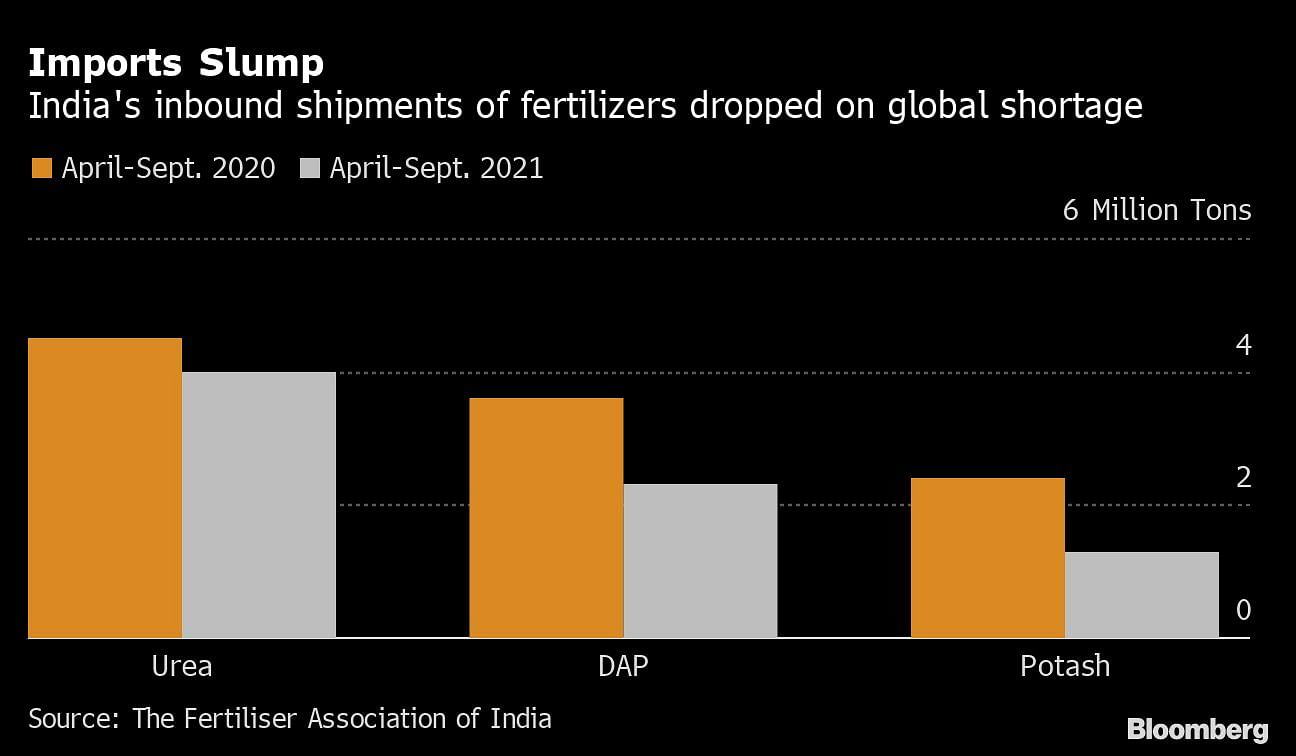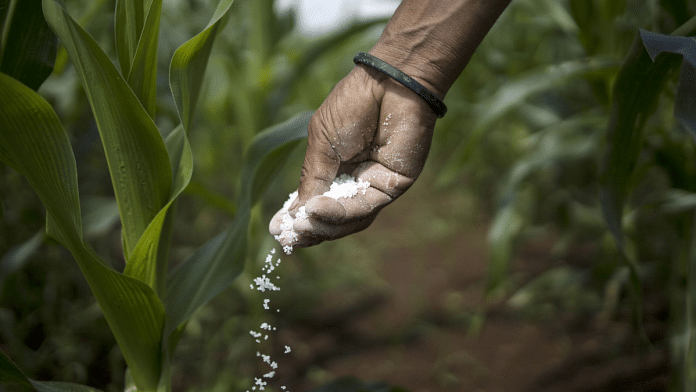New Delhi: Indian farmers squeezed by a massive shortage of fertilizers are turning to the black market and paying exorbitant prices for supplies.
The shortfall has led to a thriving market where subsidized crop nutrients are sold illegally at prices much higher than levels set by the government. Shady agents have been busy fielding requests from farmers who call them in desperate need.
With a key planting season underway for India’s millions of households that depend on agriculture for a living, farmers say they don’t have much of a choice.
We either have to cut the use of fertilizers and risk lower production, or pay sky-high prices on the black market, said Dilip Patidar, a wheat and onion grower in the state of Madhya Pradesh.
Either option isn’t great. A drop in crop yields could drive food prices higher, worsening inflation in a country where 15% of the population faces hunger. Paying high prices on the black market will hurt the incomes of small and marginal farmers, which make up more than 80% of India’s agricultural sector.
India is one of the worst affected by a worldwide fertilizer crisis. Prices of crop nutrients have soared as tight coal and natural gas supplies forced some fertilizer plants in Europe to close. China and Russia have also curbed exports to safeguard domestic supply. These hurdles will keep fertilizer prices elevated through the first half of 2022, according to Gro Intelligence.
India will be first to feel the pinch as its fertilizer demand tends to peak in the fourth to first quarter, according to Alexis Maxwell, an analyst for Bloomberg Intelligence. The export curbs by China, one of India’s top suppliers, have left the South Asian nation with very few options for fertilizer supplies, she said.

India imports up to a third of its fertilizers and is the world’s biggest buyer of urea and di-ammonium phosphate, known as DAP. The supply crunch will likely hurt production of staple crops such as wheat, rapeseed and pulses planted during the winter.
“The shortage of fertilizers comes at a time when the prices of other inputs like diesel are also elevated and some farmers have suffered damage due to erratic rainfall,” said Garima Kapoor, an economist at Elara Securities (India) Pvt. Ltd. in Mumbai. These may limit the recovery in rural demand, she added.
India is boosting its own fertilizer production and working on long-term deals with suppliers to curb price increases, according to people familiar with the matter. Current subsidies to fertilizer companies are sufficient but if more is required, the government will grant it, said the people, who asked not to be named as they’re not authorized to discuss publicly.
The federal government has started making weekly allocation of fertilizers to districts based on demand to prevent hoarding by retailers and farmers amid low stockpiles, one of the people said. Talks are ongoing with countries such as Oman, Jordan, Morocco and Russia for long-term supplies, the person said.
Economic Affairs Secretary Ajay Seth declined to comment on whether the government will further boost fertilizer subsidies. A spokeswoman for the fertilizer ministry wasn’t available for comments.
On the black market, a 45-kilogram bag of di-ammonium phosphate is selling for 1,500 rupees ($20), above the maximum retail price of 1,200 rupees, farmer Patidar said. A bag of urea costs as much as 400 rupees compared with the usual price of 266 rupees.
Patidar is waiting for his fertilizer stocks to arrive. “If I don’t get adequate supplies on time my output will fall,” he said.
Another farmer in India’s northern state of Haryana is also facing fertilizer woes. Sukram Pal said he managed to sow wheat by using half the usual amount of DAP, but now needs urea which is in short supply. “Production is definitely going to fall this year,” he said.—Bloomberg
Also read: Modi govt likely to approve additional fertiliser subsidy of Rs 28,600 cr






